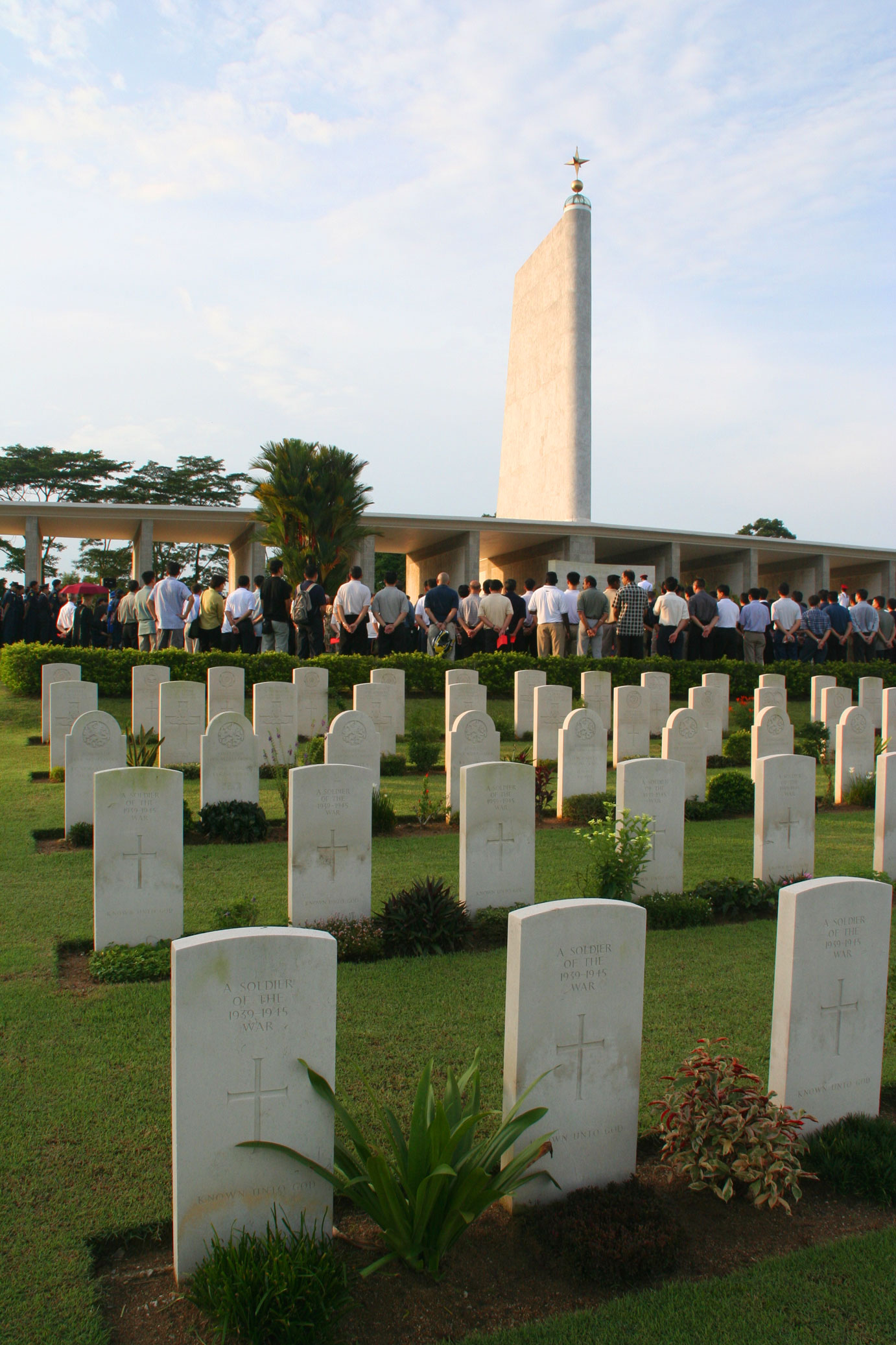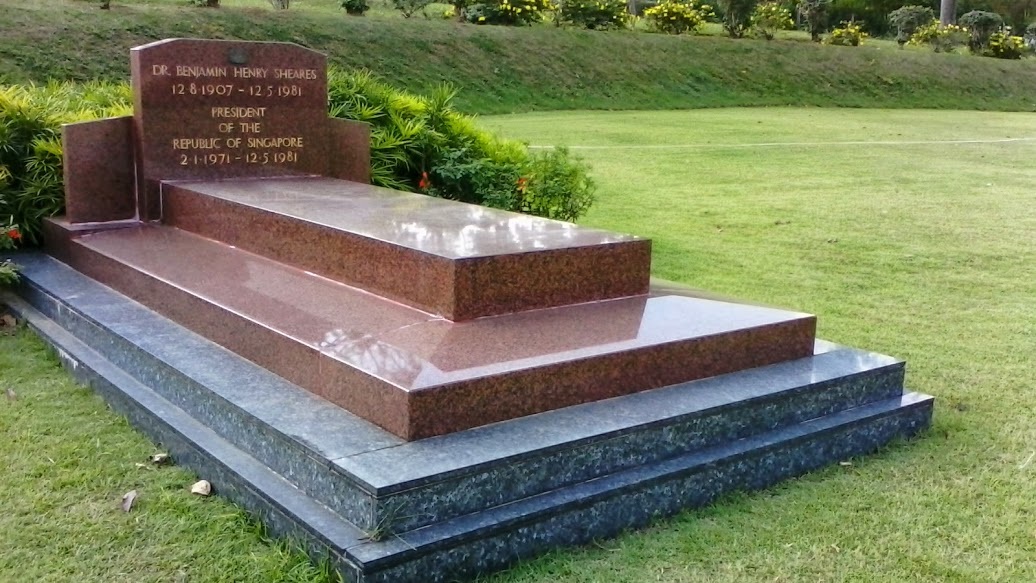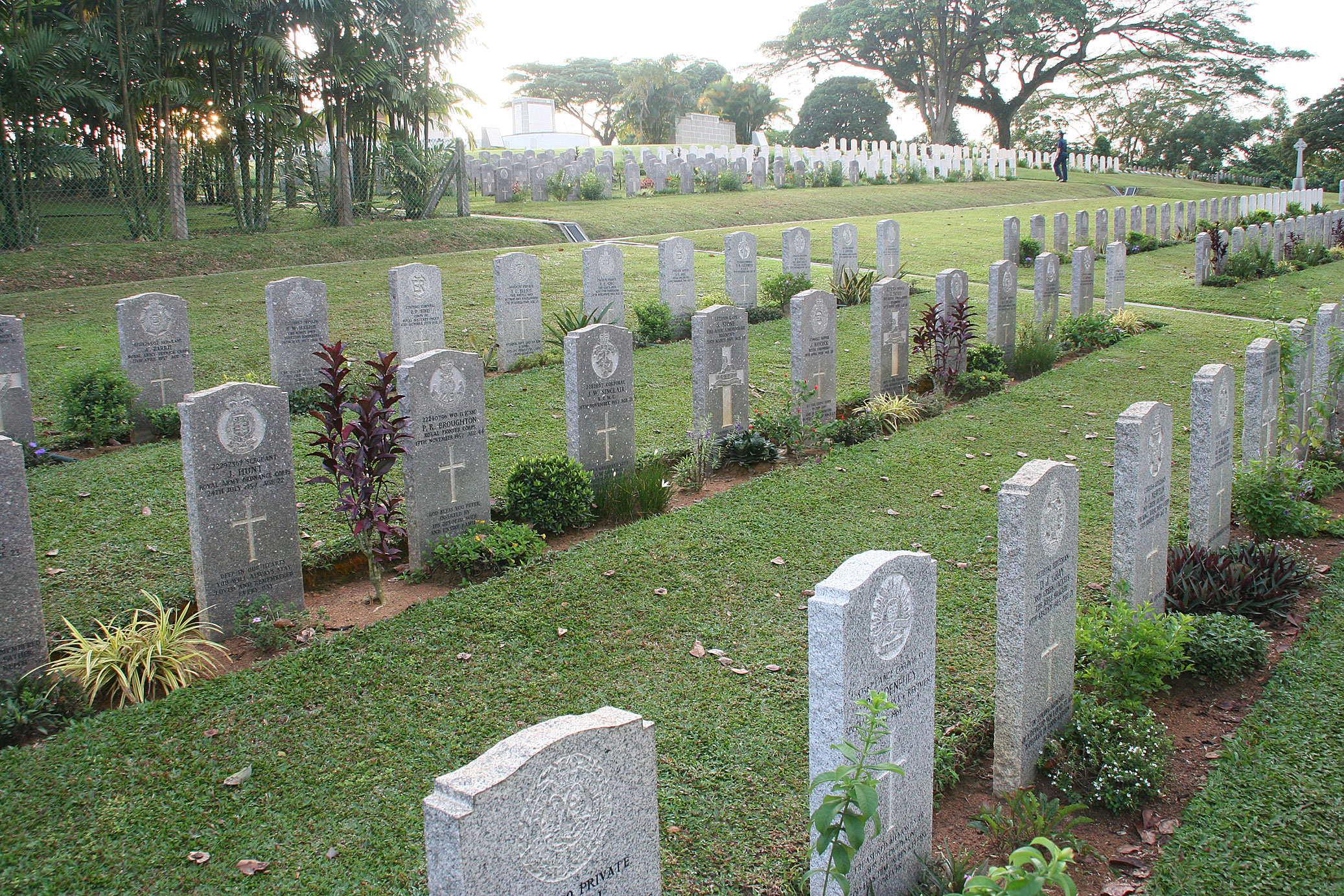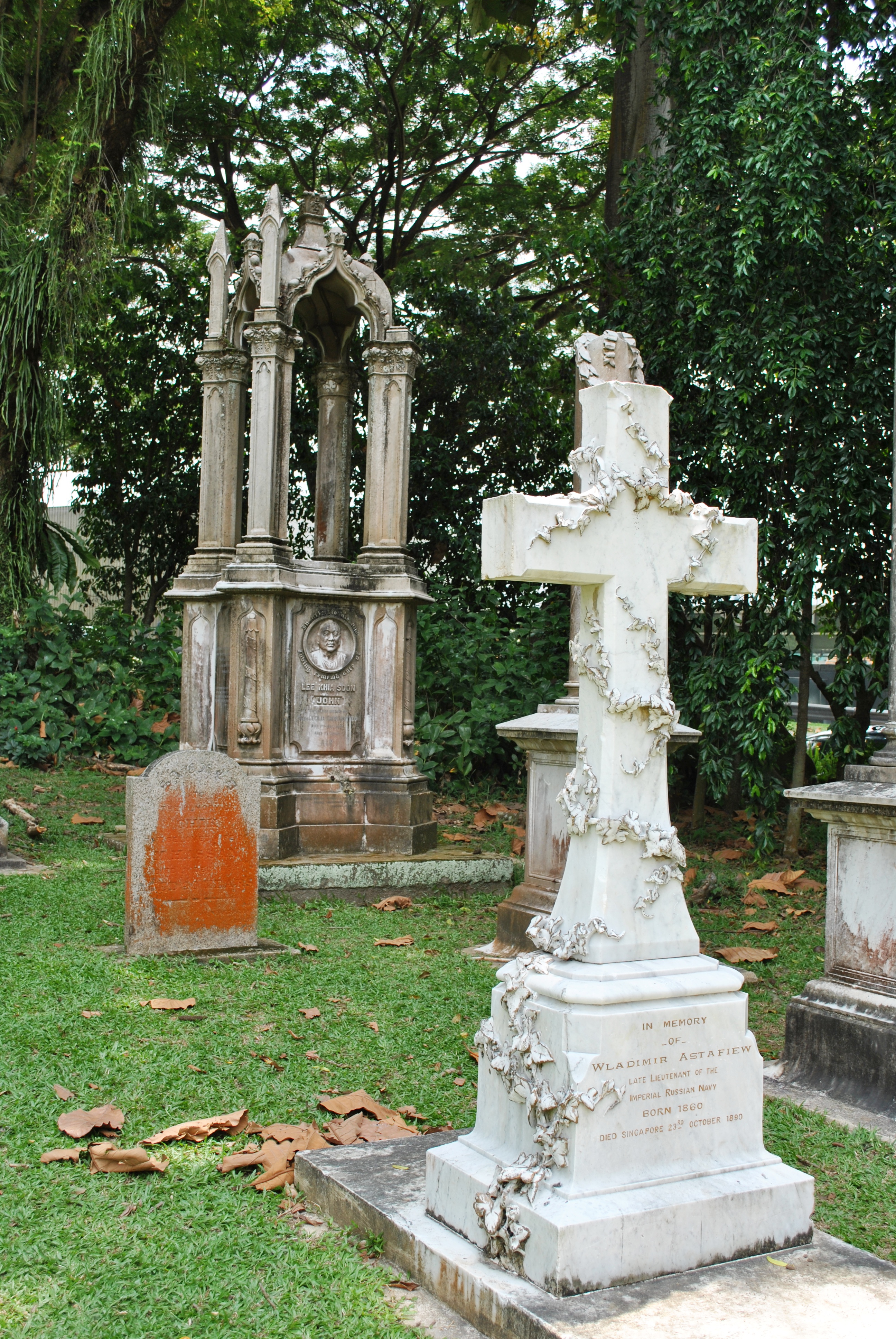|
Kranji State Cemetery
The Kranji State Cemetery ( zh, 克兰芝国家公墓; ; ta, கிராஞ்சி மாநில கல்லறையில்) is a national cemetery of Singapore. This cemetery is located at Kranji near Kranji War Cemetery. With an area of , the Kranji State Cemetery is reserved for the burial of persons who have made a significant contribution to Singapore, and is maintained by the National Environment Agency. War graves sections are maintained by the Commonwealth War Graves Commission. Notable burials Former Presidents of Singapore are buried in the state cemetery. See also * Death in Singapore * Former cemeteries in Singapore * Mandai Crematorium and Columbarium – resting place of ordinary Singaporeans as well as several presidents, senior cabinet ministers, as well as former Prime Minister Lee Kuan Yew and his wife Kwa Geok Choo Kwa Geok Choo (; 21 December 1920 – 2 October 2010) was a Singaporean lawyer. She was the wife of former Prime Minister L ... [...More Info...] [...Related Items...] OR: [Wikipedia] [Google] [Baidu] |
Singapore
Singapore (), officially the Republic of Singapore, is a sovereign island country and city-state in maritime Southeast Asia. It lies about one degree of latitude () north of the equator, off the southern tip of the Malay Peninsula, bordering the Strait of Malacca to the west, the Singapore Strait to the south, the South China Sea to the east, and the Straits of Johor to the north. The country's territory is composed of one main island, 63 satellite islands and islets, and one outlying islet; the combined area of these has increased by 25% since the country's independence as a result of extensive land reclamation projects. It has the third highest population density in the world. With a multicultural population and recognising the need to respect cultural identities of the major ethnic groups within the nation, Singapore has four official languages: English, Malay, Mandarin, and Tamil. English is the lingua franca and numerous public services are available only in Eng ... [...More Info...] [...Related Items...] OR: [Wikipedia] [Google] [Baidu] |
National Environment Agency
National Environment Agency (NEA) is a statutory board under the Ministry of Sustainability and the Environment of the Government of Singapore. NEA is responsible for improving and sustaining clean and green environment in Singapore. Its role is to fight pollution, maintain public health and provide meteorological information. On 1 April 2019, NEA's food related duties were absorbed by its successor Singapore Food Agency (SFA) which also absorbed the food related duties of two other statutory boards namely Agri-Food and Veterinary Authority of Singapore (AVA) and Health Sciences Authority (HSA). SFA is a statutory board under the Ministry of Sustainability and the Environment. Organization NEA comprises three operational divisions: *Environmental Public Health *Environmental Protection *Meteorological Service Singapore Environmental Public Health Divisions The Environmental Public Health Division conducts comprehensive ground surveillance and takes preventive measures to ... [...More Info...] [...Related Items...] OR: [Wikipedia] [Google] [Baidu] |
National Cemetery
The following is a partial list of prominent National Cemeteries: Africa Algeria * El Alia Cemetery, Algiers Burundi * Mausolée des Martyrs de la Démocratie, Bujumbura Ghana * Asomdwee Park, Accra * Burma Camp Military Cemetery, Accra Liberia * Palm Grove Cemetery, Monrovia (former) Zimbabwe * National Heroes Acre, Harare Asia China * Babaoshan Revolutionary Cemetery, Beijing Indonesia * Kalibata Heroes Cemetery, Jakarta * Giri Tunggal Heroes' Cemetery, Semarang * Kusumanegara Heroes' Cemetery, Yogyakarta Iran * Behesht-e Zahra, Tehran Israel * Mount Herzl, Jerusalem Japan * Chidorigafuchi National Cemetery, Tokyo Laos * Cimetière Révolutionnaire, Vientiane Malaysia * Taman Selatan, Putrajaya * Makam Pahlawan, Kuala Lumpur Mongolia * Altan-Ölgii National Cemetery, Ulan Bator North Korea * Cemetery of Fallen Fighters of the KPA, Pyongyang * Fatherland Liberation War Martyrs Cemetery, Pyongyang * Revolutionary Martyrs' Cemetery, Ta ... [...More Info...] [...Related Items...] OR: [Wikipedia] [Google] [Baidu] |
Kranji
Kranji is a suburb in northwestern Singapore, bounded by Sungei Kadut to the north, Turf Club to the east, as well as Lim Chu Kang and the Western Water Catchment to the west. It is located about from the city centre and it came from Malay word "Buah Keranji" due to pronunciation by local Malay, it became "Kranji". Etymology Kranji is named after a local tree, ''pokok'' ''kranji'' or ''keranji'' (Malay for ''Dialium indum'', velvet tamarind tree). History Kranji served as a military camp before the Japanese invasion of Singapore in 1942, and is now the home of the Kranji War Cemetery and Kranji War Memorial, commemorating the 30,000 Commonwealth personnel who died in Singapore, Malaya, Java and Sumatra during World War II. In addition, it is now a prime residential area comprising mostly stand-alone properties. There are no towering apartment blocks, unlike most suburbs of Singapore. It is also an industrial area. Highlights The Singapore Turf Club operates Kranji Racecourse, ... [...More Info...] [...Related Items...] OR: [Wikipedia] [Google] [Baidu] |
Kranji War Cemetery
The Kranji War Cemetery is located in Kranji, Singapore, and is the final resting place for Allied soldiers who perished during the Battle of Singapore and the subsequent Japanese occupation of the island from 1942 to 1945 and in other parts of Southeast Asia during World War II. There are 4,461 World War II casualties buried or commemorated at this cemetery, of which more than 850 of these are unidentified. There are 64 World War I headstones, of which three commemorate casualties known to have been buried elsewhere but whose graves could not be found on concentration. Adjacent to the War Cemetery is the Kranji Military Cemetery, also administered by the Commonwealth War Graves Commission. History The Kranji area was previously a military camp. At the time of the Japanese invasion of Malaya, the area was in use as an ammunition magazine. After the fall of Singapore, the Japanese established a prisoner-of-war camp at Kranji and a hospital nearby at Woodlands. After the war, I ... [...More Info...] [...Related Items...] OR: [Wikipedia] [Google] [Baidu] |
Commonwealth War Graves Commission
The Commonwealth War Graves Commission (CWGC) is an intergovernmental organisation of six independent member states whose principal function is to mark, record and maintain the graves and places of commemoration of Commonwealth of Nations military service members who died in the two World Wars. The commission is also responsible for commemorating Commonwealth civilians who died as a result of enemy action during the Second World War. The commission was founded by Fabian Ware, Sir Fabian Ware and constituted through Royal Charter in 1917 as the Imperial War Graves Commission. The change to the present name took place in 1960. The commission, as part of its mandate, is responsible for commemorating all Commonwealth war dead individually and equally. To this end, the war dead are commemorated by a name on a headstone, at an identified site of a burial, or on a memorial. War dead are commemorated uniformly and equally, irrespective of military or civil rank, race or creed. The co ... [...More Info...] [...Related Items...] OR: [Wikipedia] [Google] [Baidu] |
President Of Singapore
The president of Singapore is the head of state of the Singapore, Republic of Singapore. The role of the president is to safeguard the Reserves of the Government of Singapore, reserves and the integrity of the Singapore Civil Service, public service. The presidency is largely ceremonial, with the Cabinet of Singapore, Cabinet led by the Prime Minister of Singapore, prime minister having the general direction and control of the Government of Singapore, government. The incumbent president is Halimah Yacob, who took office on 14 September 2017. She is also the first female president in the country's history. History The office of the ''President of the Republic of Singapore'' was created on 9 August 1965 when Singapore achieved independence from Malaysia. It replaced the office of Yang di-Pertuan Negara which was created when Singapore attained Self-governance of Singapore, self-governance from the United Kingdom in 1959. The last Yang di-Pertuan Negara, Yusof Ishak, became the first ... [...More Info...] [...Related Items...] OR: [Wikipedia] [Google] [Baidu] |
Yusof Ishak
Yusof bin Ishak (12 August 191023 November 1970) was a Singaporean politician and journalist who served as the first president of Singapore from 1965 until his death in 1970. Prior to becoming head of state, Yusof was a well-known journalist who co-founded ''Utusan Melayu'', a daily newspaper that was in circulation until 9 October 2019. He started journalism after graduating from Raffles Institution in 1929, and joined ''Warta Malaya'', a well-known Malay newspaper company, in 1932. He left the company in 1938 and co-founded ''Utusan Melayu''. Yusof held many appointments within the Singapore Government. He served on the Film Appeal Committee between 1948 and 1950, and was a member of both the Nature Reserves Committee and Malayanisation Commission for a year. In July 1959, he was appointed Chairman of the Public Service Commission (PSC). He was sworn in on 3 December that year as Yang di-Pertuan Negara of Singapore after the People's Action Party (PAP) won the f ... [...More Info...] [...Related Items...] OR: [Wikipedia] [Google] [Baidu] |
Benjamin Henry Sheares
Benjamin Henry Sheares (12 August 1907 – 12 May 1981) was a Singaporean politician, physician and academic who served as the second president of Singapore from 1971 until his death in 1981. Sheares retired in 1960 and was in private practice before being elected as the president of Singapore by the Parliament after the death of Yusof Ishak, the former president of the Republic, on 23 November 1970. He was sworn on 2 January 1971. Sheares initially wanted to retire after finishing his second term as he felt that he did not have the energy for another term, but Prime Minister Lee Kuan Yew persuaded him and Sheares took on his third term. He served as the president of Singapore for three terms from 2 January 1971 until his death on 12 May 1981. Both the Benjamin Sheares Bridge and Sheares Hall at the National University of Singapore are named after him. Early life and education Sheares was born on 12 August 1907 in Singapore to an Eurasian family with an English lineage. H ... [...More Info...] [...Related Items...] OR: [Wikipedia] [Google] [Baidu] |
Death In Singapore
Deaths in Singapore offset the population increase from live births. In 2007, 17,140 people in Singapore died from various causes. The death rate was 4.5 deaths per 1,000 of the population. There are strict regulations surrounding death and treatment of the body after death. Legal definition of death Under section 2A of the Interpretation Act, a person is considered as having died when there is either irreversible cessation of circulation of blood and respiration, or total and irreversible cessation of all functions of the brain. Irreversible cessation of the blood circulation and respiration is determined according to ordinary standards of current medical practice, while total and irreversible cessation of all brain functions is made in accordance with the following criteria: * Conditions to be satisfied before determining irreversible cessation of all brain functions. Before tests are carried out to determine if all the functions of a person's brain have irreversibly ceased, t ... [...More Info...] [...Related Items...] OR: [Wikipedia] [Google] [Baidu] |
Former Cemeteries In Singapore
A number of former cemeteries in Singapore were cleared of graves with the land redeveloped during the second half of the twentieth century. The cemeteries had closed when they were either full or were relocated. The records and histories of some of these cemeteries are now left. Due to the problem of land scarcity in Singapore, use of land for spacious or defunct cemeteries is regarded as a waste of resources. As the need for land for urban development and public housing increased in Singapore was considered more pressing, former cemeteries and burial sites were gradually cleared to make way for redevelopment. By 1985, 21 cemeteries had been cleared, and an approximate 120,000 graves had been exhumed by the Housing Development Board. Bukit Larangan Forbidden Hill Cemetery Forbidden Hill Cemetery was an early Christian cemetery established in 1822 on Bukit Larangan (Malay for Forbidden Hill), near to the residence built by Sir Thomas Stamford Raffles. The cemetery was discon ... [...More Info...] [...Related Items...] OR: [Wikipedia] [Google] [Baidu] |
Mandai Crematorium And Columbarium
Mandai Crematorium and Columbarium is a crematorium and columbarium complex located at Mandai Road in Mandai, Singapore. The complex is operated by the Government of Singapore under the National Environment Agency. It is one of two government crematoria in Singapore, the other being the Choa Chu Kang Columbarium. Mandai Crematorium and Columbarium is located not far from Yishun New Town. This complex is one of the final resting places for many Singaporeans because of the new technology and limited spaces to host cemeteries for the dead. History With Mount Vernon Crematorium, the only government crematorium reaching its maximum capacity in the late 1970s, a need for a second crematorium arose. The Government chose a plot of land at Mandai to build Singapore's second crematorium. Completed in 1982, it consists of 4 big cremators and 4 small cremators, and 1200 niches. Shortly after its opening, it was designated to cremate exhumed remains from closed down cemeteries in Singapore. ... [...More Info...] [...Related Items...] OR: [Wikipedia] [Google] [Baidu] |







